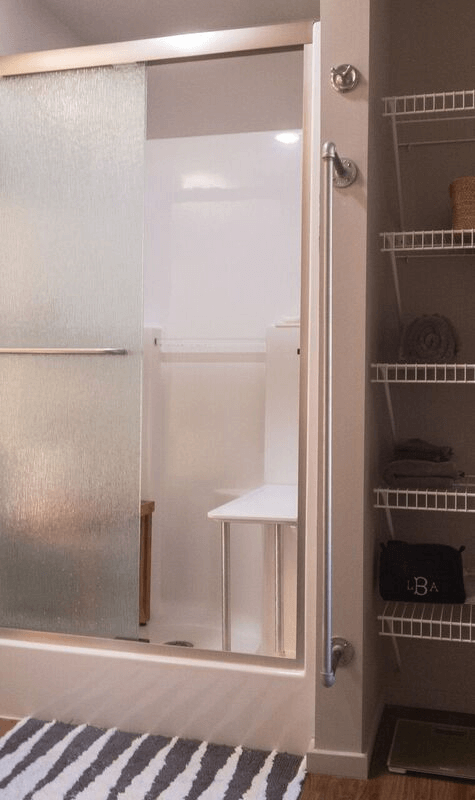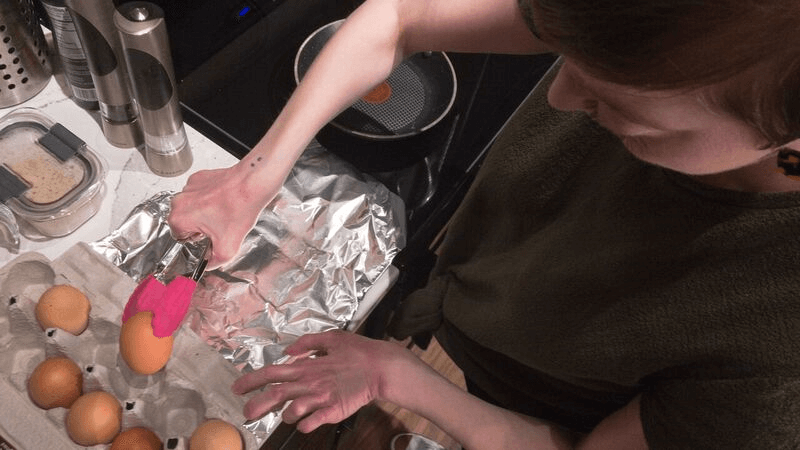At 22, when I graduated from college, I, like so many of my fellow millennials, moved back home. I spent two transitional years in the room where I’d grown up, unicorn wallpaper still casting magic above the bed, and then, one weekend, I packed my clothes and moved out.
I’d lived alone in my college town, but my first apartment in Omaha, my hometown, was the first apartment for which I bought new furniture (a loveseat and a bed — the books and the stereo got plunked on the floor). My boss at the time gave me a round wood table and chairs and a mid-century modern armchair I put in my ramshackle bedroom. The closet was a mess of saddle shoes and skirts and handbags, I survived on cereal and Diet Coke, and I was doing the thing, finally, without a safety net.
I’ve lived in six apartments in Omaha now — three on my own, the fourth with a boyfriend, and two more on my own after him. The most recent became home just this July, and it’s my favorite of them all — high ceilings, a sunny balcony, a westward view of Nebraska’s nightly showstopper sunsets. The furniture matches. Things live properly on bookcases and shelves. There’s art made by my friends on the walls of every room. 
In my dozen years of living independently, I’ve learned how to keep things tidy (a minimalist approach goes far). I’ve learned how to cook. I can host a nice little party.
I learned, after a doubtful beginning, domesticity.
I’ve also become less able to manage it.
In the reverse universe that is living with a neuromuscular disease, as my skill set grew, my ability shrank. I can make a fantastic vegetarian, gluten-free shepherd’s pie — just not on my own. Three sets of sheets is indeed the exact right number to have for each bed in the house — but I can’t smooth them out, or even fold them, anymore, neatly for the drawer.
This year, 17 years after my Charcot-Marie-Tooth disease (CMT) diagnosis, I use a walker full-time, meaning I don’t cheat anymore hugging the wall from the bedroom to the bathroom — I use the walker now. My new apartment is bigger, but that means it has fewer easy handholds and supports. Space has forced me to lean, finally, on all of my support.
I have an assistant who comes weekly to help with chores and errands, but most of the time, I’m by myself, working at my desk, cooking in the kitchen, reading on the balcony.

I can do things. I can do the thing — independent living — but it’s taken some creative thinking.
The first time I saw my new apartment, I knew I couldn’t live in it without finding a solution for the shower. It’s a standing design, but an internal built-in bench doesn’t come close enough to the shower’s edge for me to use it as an entry and exit point. Because foot drop prevents me from stepping over the low ledge at the shower’s base, I need a seat on which to pivot in and out.
In this, I got lucky. My dad is a retired architect. He called a contractor friend, sent a few photos of my shower and a few sketched thoughts along, and together we designed a custom-made shower bench of sturdy, water-resistant materials that safely solved the problem of egress. I also looped in my apartment building’s head of maintenance, Rex, to add a grab bar that was thinner than standard bars — my hand contractures don’t allow for a wide grip. Patient and even more creative than I when it came down to what Menard’s was stocking, Rex delivered a slim industrial bar that is, I gotta say, the coolest assistive bar in the Middle West.
Reach and grip have become tricky business in other rooms. My kitchen is just a little too wide to turn in when one’s got bad balance and a hot pan in hand, so I’ve started putting a trivet on my walker’s seat to make the transfer from stovetop to elsewhere. Years ago, my mom gave me a long wooden kitchen ruler with a hook at one end designed to pull out a hot oven rack; that hook has come in handy pulling down rolls of paper towels from cabinets or chasing bits of dried pasta that roll into corners. And utilizing a tip from my grandmother, who lives with advanced arthritis, tongs can pick up bits and bobs off the floor, too — and, when they’re soft and silicone-tipped, can gently retrieve an egg from a carton.

I automate as much as I can — electric can and wine openers and stand-mixers are crucial. I have a multi-piece chopper/food processor/blender that works with a simple motor that fits on top and has just one big power button to press. Lights and the stereo are connected to an Amazon Echo that lets me settle in, shoes off, without having to get up for much.
It’s true that I don’t, anymore, make elaborate dinners. My parties now are all of the cocktail-and-snacks variety. I vacuum from a chair, and not often. I ask for a lot more help. I’m a little embarrassed to admit the thing about the tongs.
But what I’m saying is, I’m here. I’m figuring out how to be here. There aren’t solutions for every problem, but there is that.
There are ways, if you’re open to them, to be just you, at home, and pretty comfortable at that.
Lindsey Baker is the healthcare communications manager for MDA’s National Office. She lives and works in Omaha, Neb.
